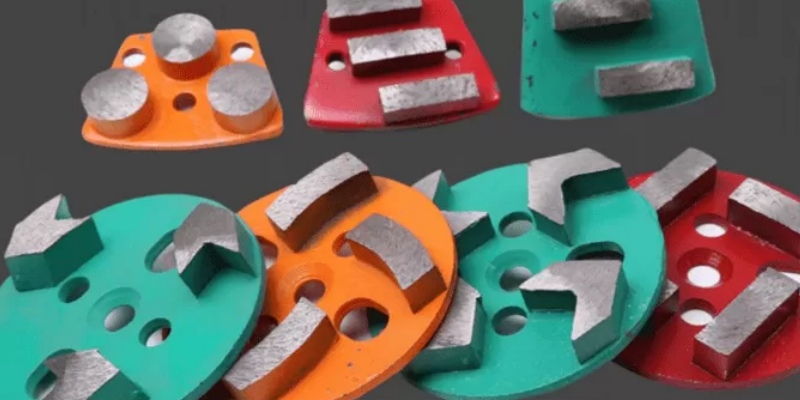The Influence of Diamond Tool Specifications on Grinding Efficiency
Diamond tools are extensively utilized in sectors like construction, stone processing, and floor restoration because of their exceptional hardness and durability. However, the effectiveness of these tools in grinding is largely determined by their specifications. Key factors such as grit size, bond type, segment shape, and diamond concentration can greatly impact grinding performance, affecting both speed and surface finish quality. Choosing the appropriate specifications is very important for achieving the best results while reducing time and wear on the tools.
Grit size is one of the main elements influencing grinding efficiency. Coarser grits, such as 30 or 40, are effective for rapid material removal, making them suitable for heavy grinding tasks that require quick cutting. Conversely, finer grits, like 100 or above, are used for finishing work, providing a smoother surface but at a slower material remove rate. The selection of grit size should correspond to the specific stage of grinding, whether it involves initial surface preparation or fine polishing.
The type of bond used in the tool is another vital factor. TransGrind diamond tools can feature metal, resin, or hybrid bonds, each with distinct properties that cater to different materials. Metal bond diamond grinding heads are very durable and excel in aggressive grinding on hard surfaces like concrete. In contrast, resin bond tooling is softer and more suitable for polishing and finishing tasks. Hybrid bond transitional diamond tools combine the benefits of both, offering versatility for various grinding conditions.

The shape and configuration of the segments also significantly affect grinding efficiency. Different shapes, such as bars, rounds, arrows, or trapezoids, influence the pressure distribution and cutting capability of the tool. For instance, arrow segments are designed for aggressive cutting and ideal for rapid material removal, while round segments are more suitable for smoother grinding and finishing. What’s more, the arrangement of the segments can impact the tool’s cooling, helping to prevent overheating and improving overall efficiency during prolonged grinding operations.
Last but not least, diamond concentration, which refers to the density of diamond particles in the tool, affects both cutting performance and durability. Higher concentrations enhance cutting efficiency but may lead to increased heat generation, in contrast, lower concentrations can slow cutting speed but prolong tool life by minimizing friction. A well-balanced concentration tailored to the specific material and application ensures effective grinding without premature wear.
TransGrind Diamond Tools is a professional manufacturer and supplier of premium diamond grinding tools. Our tools are crafted for high performance, durability, and precision, ensuring optimal results in grinding and polishing tasks. To explore our wide range of products, please visit us at www.transgrindtools.com.